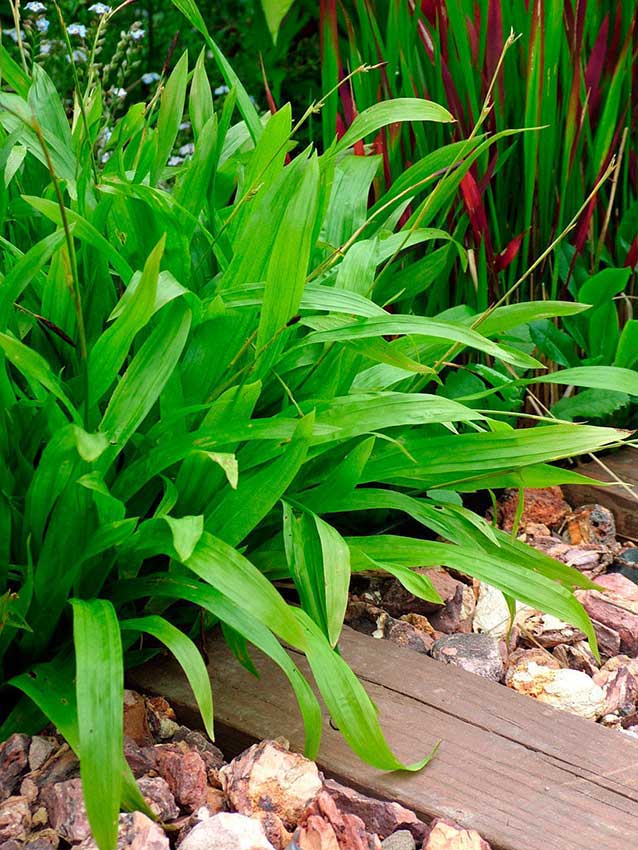Seersucker Sedge – “carex plantaginea“
Sustainable Landscaping With Native Plants
“We are at a critical point of losing so many species from local ecosystems that their ability to produce the oxygen, clean water, flood control, pollination, pest control, carbon storage, etc, that is, the ecosystem services that sustain us, will become seriously compromised.”
Have a shaded garden bed area within a woodland setting that has a moist, fertile soil? Or maybe a shady slope area with somewhat drier soil. Well this lovely, lime green sedge, which is also a native grass of the Eastern United States, will do just fine within those growing medium parameters. Seersucker Sedge (Carex plantaginea, Zones 4–8) has eye-catching foliage and a mounded form about 1 foot in width with a height of 6 to 12 inches. Preferring a moist soil makes it a perfect choice for around ponds, water features and even rain barrels. Within the bed when planted alone it creates a striking focal point within the bed.
The “seersucker” part of this sedge’s common name comes from its distinctively dimpled leaf surface, which closely resembles that of the once-popular lightweight fabric. The matte, rumpled surface and strong leaf veining make the foliage a striking contrast to companion plantings that have smooth, glossy foliage, such as Alumroot (Heuchera americana, Zones 4–9). or European wild ginger (Asarum europaeum, Zones 4–7). To propagate you just divide it as you would a hosta. Carex plantaginea also self-sows itself easily.
As for maintenance it’s simple: just shear the foliage down to about 1 inch in mid-February to early March. If you wait too long to trim the sedge, you’ll cut off the early-rising flowers, so prune carefully. Showy flower spikes on purple stems arise in spring, floating above the low-growing foliage. They’re purplish bracts with a fluff of soft yellow stamens; kind of an unusual looking flower but they are interesting and worth keeping unless you really don’t want seedlings.
These flowering stems will wither away by midsummer, so you don’t need to deadhead them to keep the plants beds tidy and debris free. A good border plant along a woodland trail or in a shade garden. It provides cover and seed for wildlife and is a host plant for various butterflies.
I almost forgot to mention – it’s deer resistant also.
All in all Seersucker Sedge is an outstanding native to know and grow in Mid-Atlantic gardens.
At Lincoln Landscaping cultivating the environment is our life and livelihood. It is our number one goal to help our clients create and maintain beautiful landscapes while reducing the impact on the environment. Whether you are interested in a pollinator landscape garden design and build or other landscaping or property management project; we can create for you an environmentally friendly, organic and beautiful property.
We Create Eco-Systems
Lincoln Landscaping of Franklin Lakes offers complete
organic landscaping, lawn care, turf and property management services.
Lincoln Landscaping “The Natural Choice”
Mike Kolenut President & CEO
https://lincolnlandscapinginc.com
(201) 848-9699











